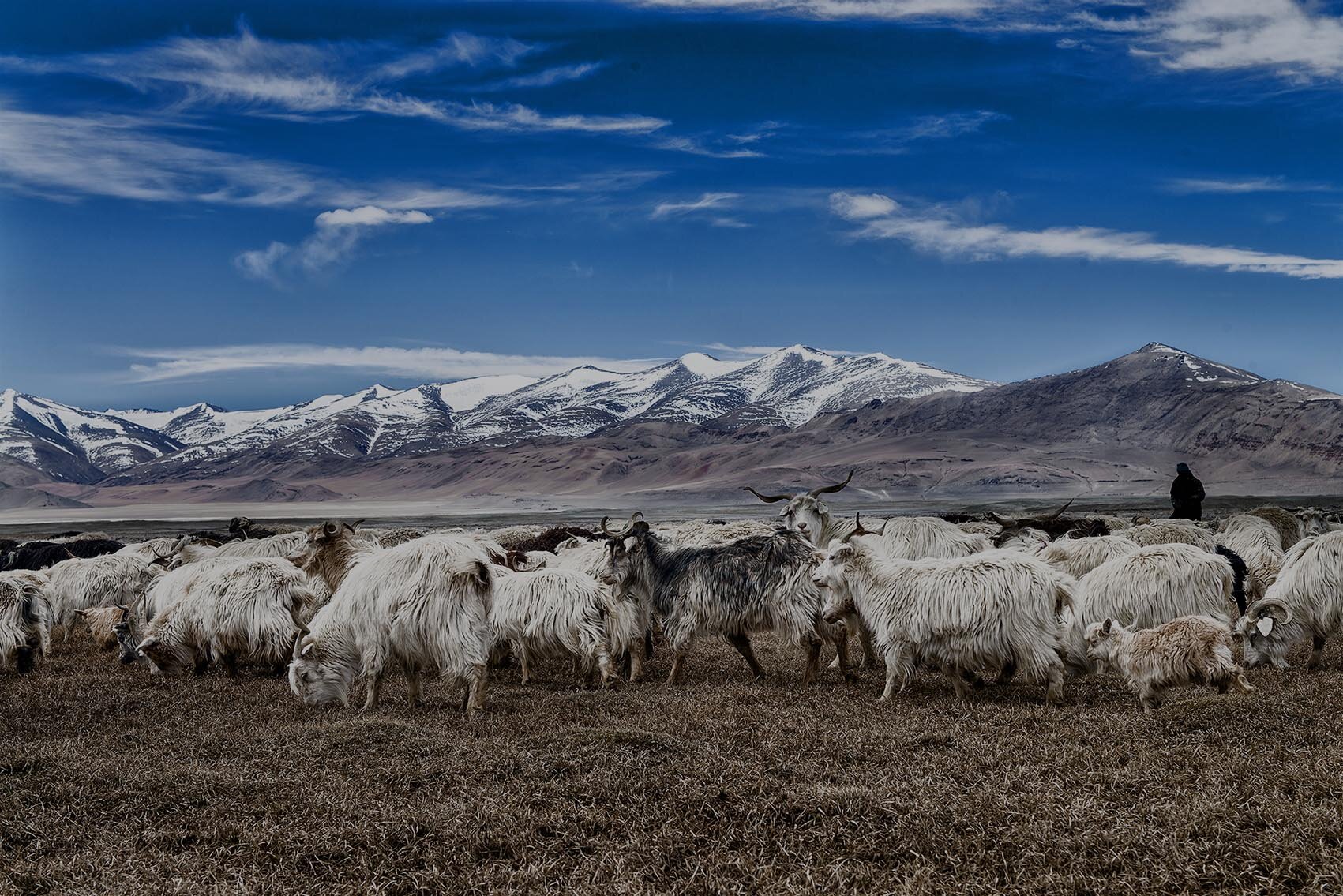
“CASHMERE”, the questions that we are often asked …
But where does cashmere come from ?
It comes from the heart of the Himalayas, from the Changthang région in Ladakh, home to the changra goats and their nomadic shepherds. Perched at an altitude between 4000m and 7000m above sea level, these goats produce an exceptionally warm & soft inner coat, under their outer layer of coarse guard hair, that protects them from the freezing winds & extreme climate. This fibre is called cashmere and Ladakh, the historial land of this fibre.
So why the name of another Indian state ?
Kashmir is the neighboring state of Ladakh. This region is historically renowned for their shawls, the famous pashmina, and the dexterity of their weavers. The British, during the colonization of India, developed the trade of this shawl and thus exported the name to the West.
Why is cashmere so exceptional and rare ?
The production of cashmere is limited by a natural cycle that relies heavily on environmental and climatic factors, which creates its rarity. Coming from the inner layer that changra goat produces mainly in winter, when temperatures goes below 30°C, this fibre is of incomparable softness and finesse, hence its exception.
In summer, during the molting season, the nomads delicately comb their goats and collect this precious fibre. Each animal produces about 200 to 300g per year, which is barely enough to make a shawl.
Also, the hard nomadic life attracts fewer and fewer young generations. These conditions only amplify the scarcity of this raw material.
If it’s so rare, why are there so much of cashmere in the market ?
Indeed, there is a huge confusion in the market when it comes to cashmere, mainly due to lack of strict regulations and awareness.
Very often, it’s difficult to verify the origin of a raw material, especially since a lot of intermediaries are often involved in this trade. Moreover, some scrupulous people or business do not even hesitate to claim, under the name of cashmere or pashmina, fibers of all different quality.
The strength of Lehvallée is precisely, having a full control of production, from raw material to finished product, without any external intervention.
To end on a little anecdote. Did you know that our shepherds sing for their goats while they comb & collect the fibre? It is to calm them and, perhaps, a way to express their love.
Want to know more ?
Rendez-vous on our insta page or go to our mag here




